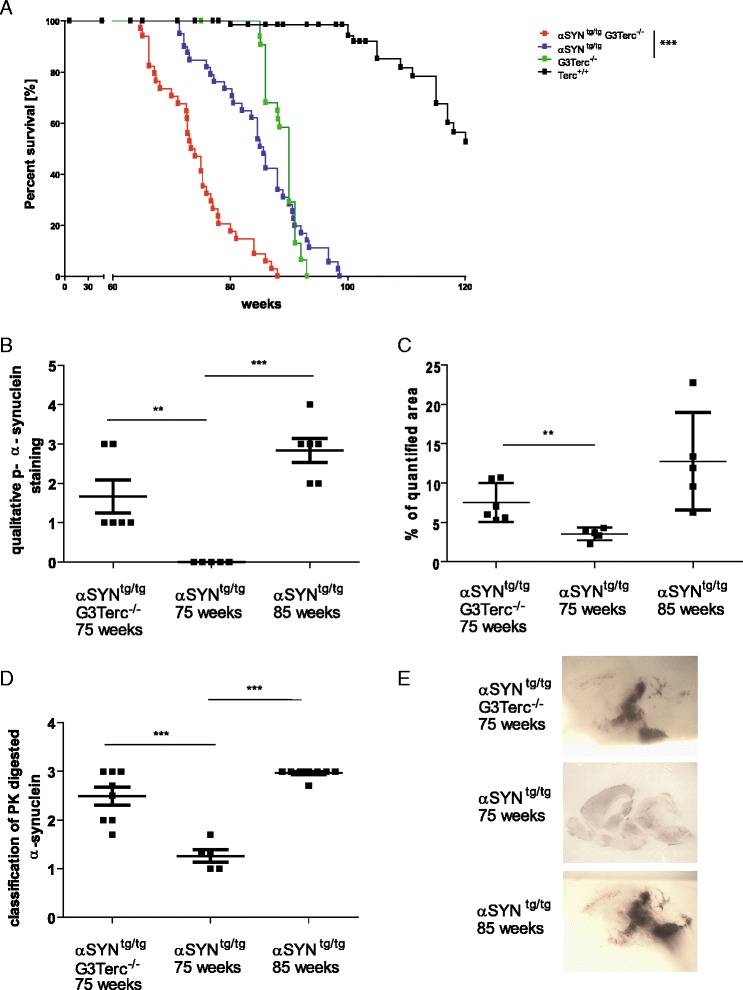Fig. 1.

Telomere shortening shortens lifespan of αSYN transgenic mice and increases aggregate formation. a Kaplan Meier survival curves for αSYNtg/tg G3Terc-/- (n = 34), αSYNtg/tg (n = 36), G3Terc-/- (n = 31) and Terc+/+ mice (n = 21). αSYNtg/tg G3Terc-/- mice show a significant decrease in survival (median life span: 73.6 weeks) in comparison to the αSYNtg/tg mice (median life span 85.6 weeks; p < 0.0001) and the G3Terc-/- mice (median life span 90 weeks; p < 0.0001). b Analysis of the pathological α-synuclein phosphorylation (p-αsyn). The amount of the p-αsyn used as a marker of disease severity. To characterize the severity and the affected zone, a scoring system was used (see Additional file 3: Figure S2). Stainings were repeated and evaluated three times and the mean values of the scores were used. αSYNtg/tg G3Terc-/- mice (75 weeks old with a motoric phenotype) showed significantly more p-αsyn staining than age-matched αSYNtg/tg mice (75 weeks old, no phenotype, p = 0.0064). c Quantification of p-asynuclein staining in the region of deep Mesencephalic nucleus. Seven sections of the region were taken and quantified using ImageJ. αSYNtg/tg G3Terc-/- mice show significant higher p-asynuclein staining in comparison to age matched αSYNtg/tg mice (P = 0.0043). d Classification of Proteinase K resistant α-synuclein aggregates. αSYNtg/tg G3Terc-/- mice showed stronger aggregate formation compared to αSYNtg/tg mice (75 weeks old, no phenotype, p = 0.0006). 85 weeks old αSYNtg/tg mice with terminal phenotype showed a very dense pattern of p-αsyn positive aggregates (αSYNtg/tg 75 weeks vs. αSYNtg/tg85 weeks; p < 0.0001). e Representative pictures of membranes, where whole brain hemispheres were attached and digested with Proteinase K. Proteinase K resistant α-synuclein aggregates reflect the severity of disease
